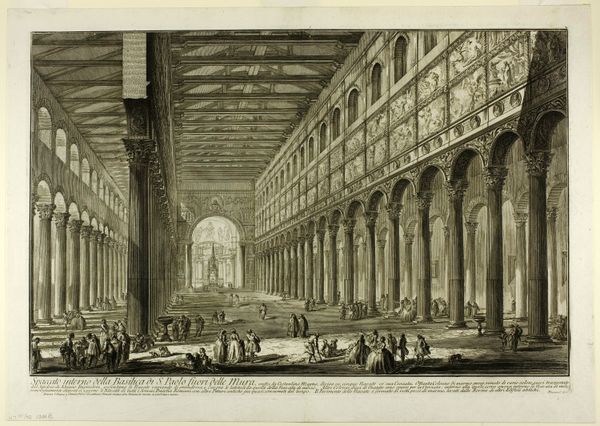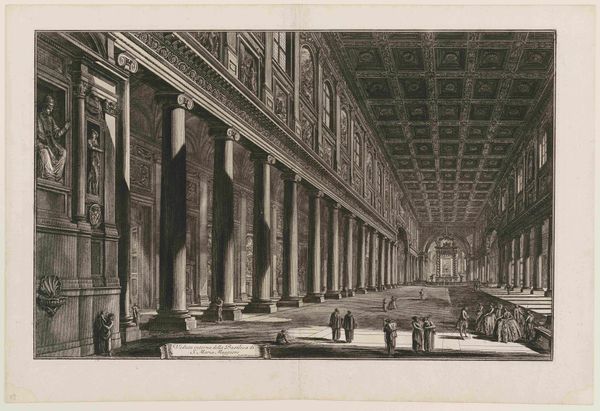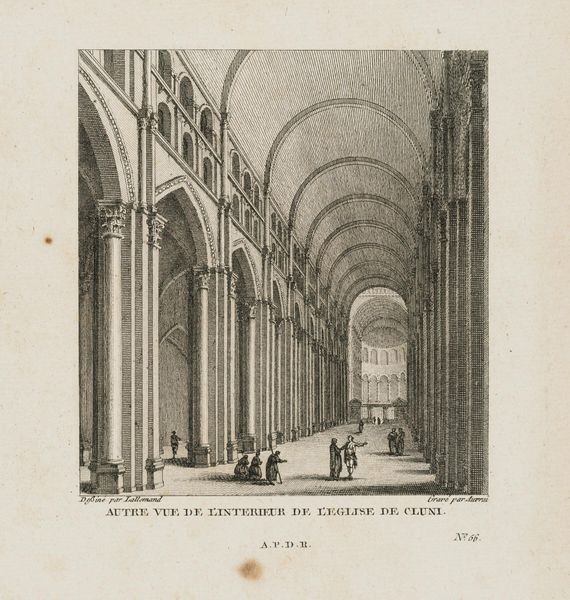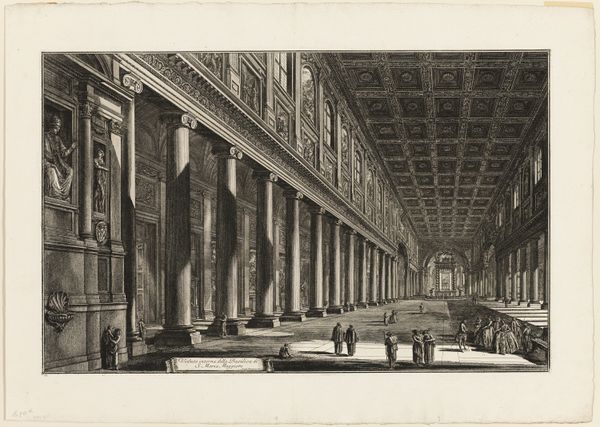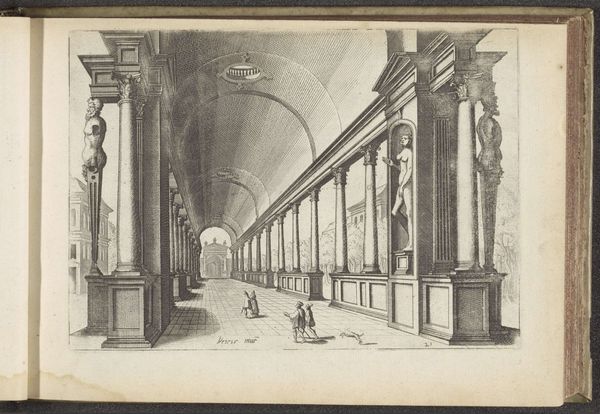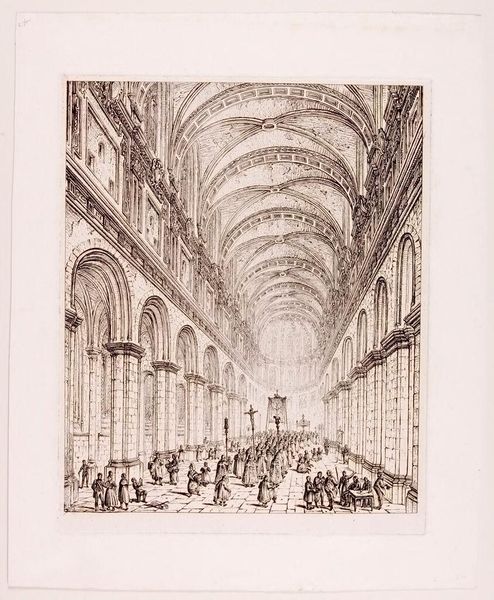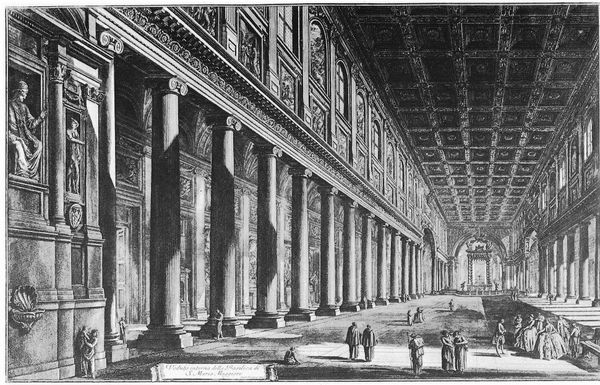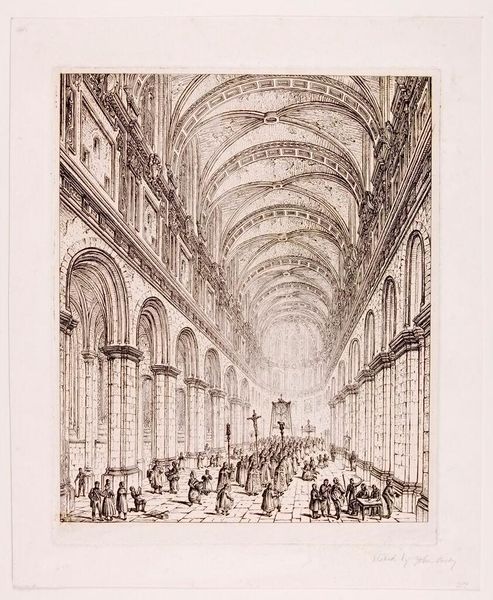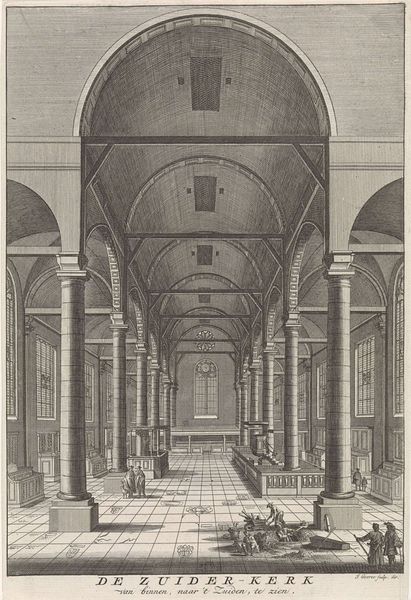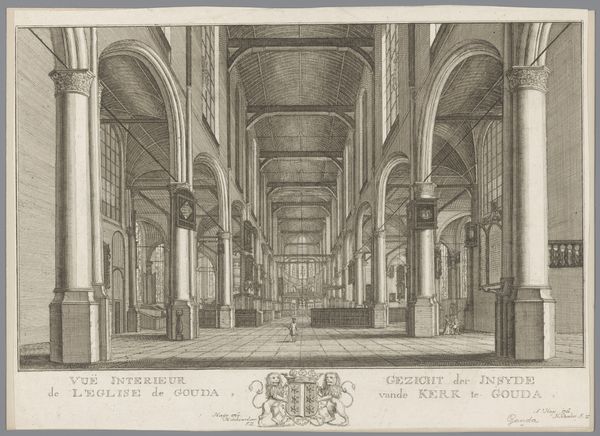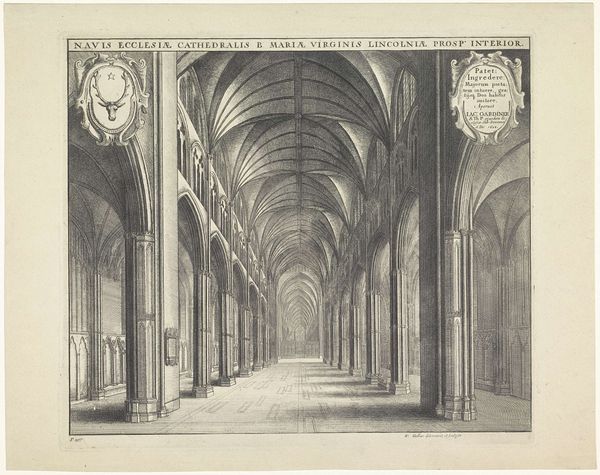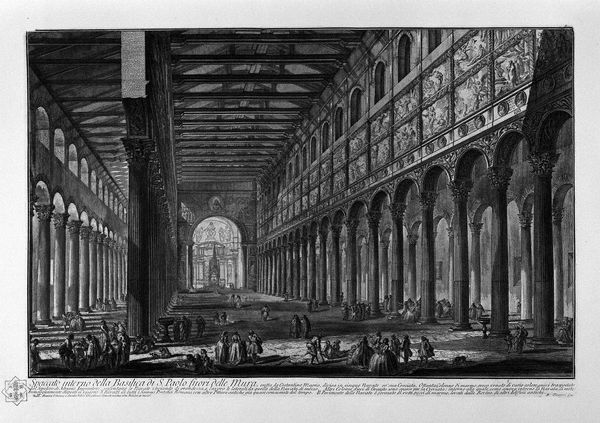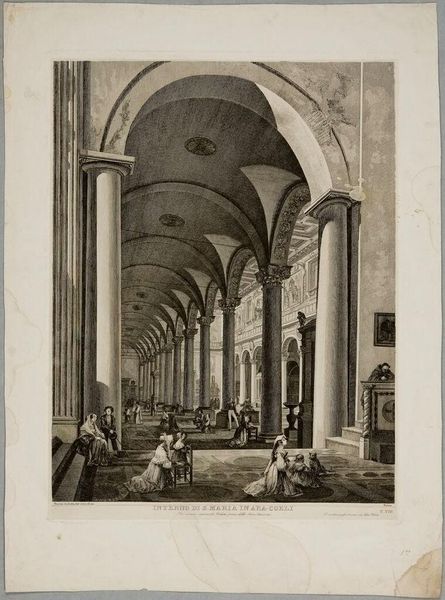
Dimensions: height 381 mm, width 577 mm
Copyright: Rijks Museum: Open Domain
Curator: Looking at this print, it's immediately striking how the lines create a sense of immense space. All those pillars disappearing into the distance… Editor: It’s undeniably impressive. Domenico Montaigu gives us "Interieur van de S. Paolo fuori le Mura," or "Interior of St. Paul Outside the Walls," circa 1750-1799, using the engraving technique. And yes, the use of perspective here is really pronounced. How do you see that playing out within its historical context? Curator: Well, the printmaking process itself would have been painstaking, a very labour-intensive way to produce images. Imagine the physical effort involved in creating this level of detail with such precision on a metal plate! The engraver's hand becomes integral to its visual and communicative impact. Each mark meticulously placed; how else could one depict all of these elaborate architectural details? Editor: Exactly! And these kinds of images served a critical role in disseminating information about important architectural achievements. Think about the audiences of the time: few people could visit Rome, let alone walk through St. Paul's. These prints allowed a broader public to experience its grandeur indirectly. Note too that its Baroque style aligns with the Church’s investment in overwhelming sensory experiences as tools to bolster its authority and win converts. Curator: Right, and it begs the question, to what extent does that visual impact translate to other socio-political issues of the era? Beyond documentation, was Montaigu consciously aiming for an aesthetic, or even an ideological, power with this detailed depiction? We’re seeing a highly idealized space here; where might he be omitting realities of construction, or even decay, from the work? Editor: These prints were often commissioned or patronized by the Church itself or wealthy individuals. Montaigu dedicated it to Cardinal Cornelio Caprara; one can’t ignore the political element embedded in the imagery and dedication here, underscoring the intertwined relationships between artistic production, patronage, and power. Curator: In that regard, its dissemination probably went hand in hand with the artist's social aspirations, no? The value of craftsmanship intertwined with networking within a complex market system? Editor: Precisely. And while many engravings were meant for a wider circulation, others likely functioned as luxury items. Reflecting the patron’s prestige and serving to further establish a specific social status and identity. Curator: Thinking about how the image transforms material reality, it reveals so much about labor, networks of power, and also perhaps unrealized aspirations in art production at the time. Editor: I agree; there’s a compelling interplay between aesthetics, politics, and accessibility reflected here, underscoring how art creates meaning, records history, and serves power simultaneously.
Comments
No comments
Be the first to comment and join the conversation on the ultimate creative platform.
